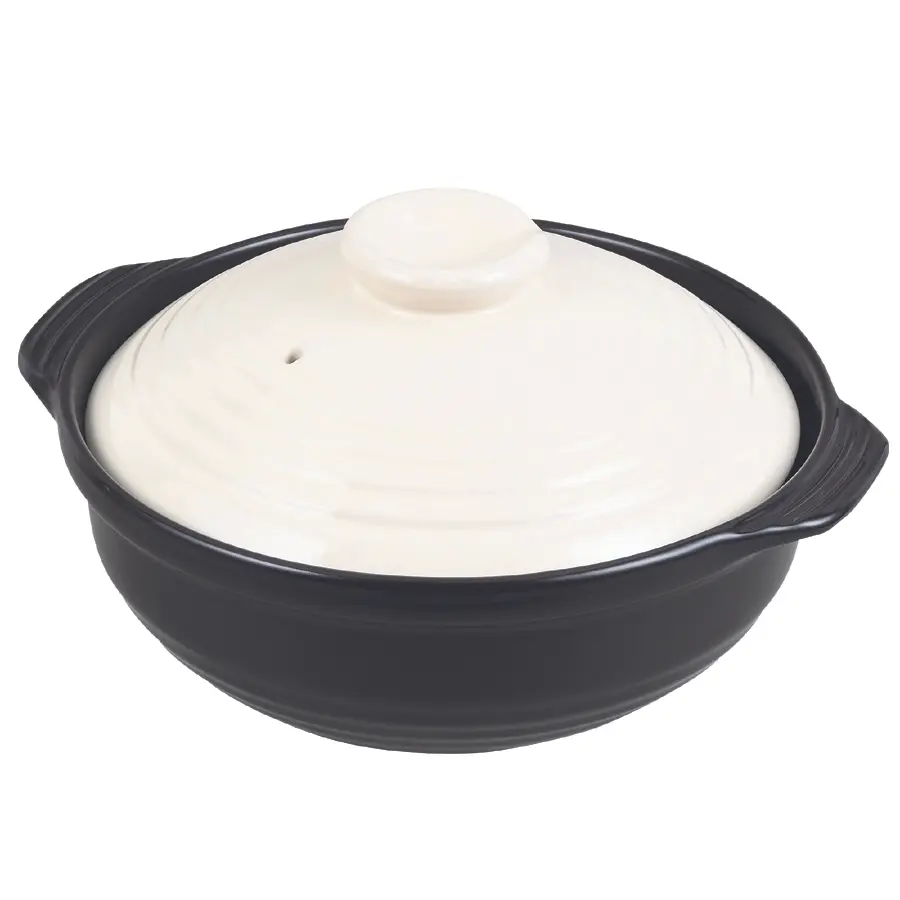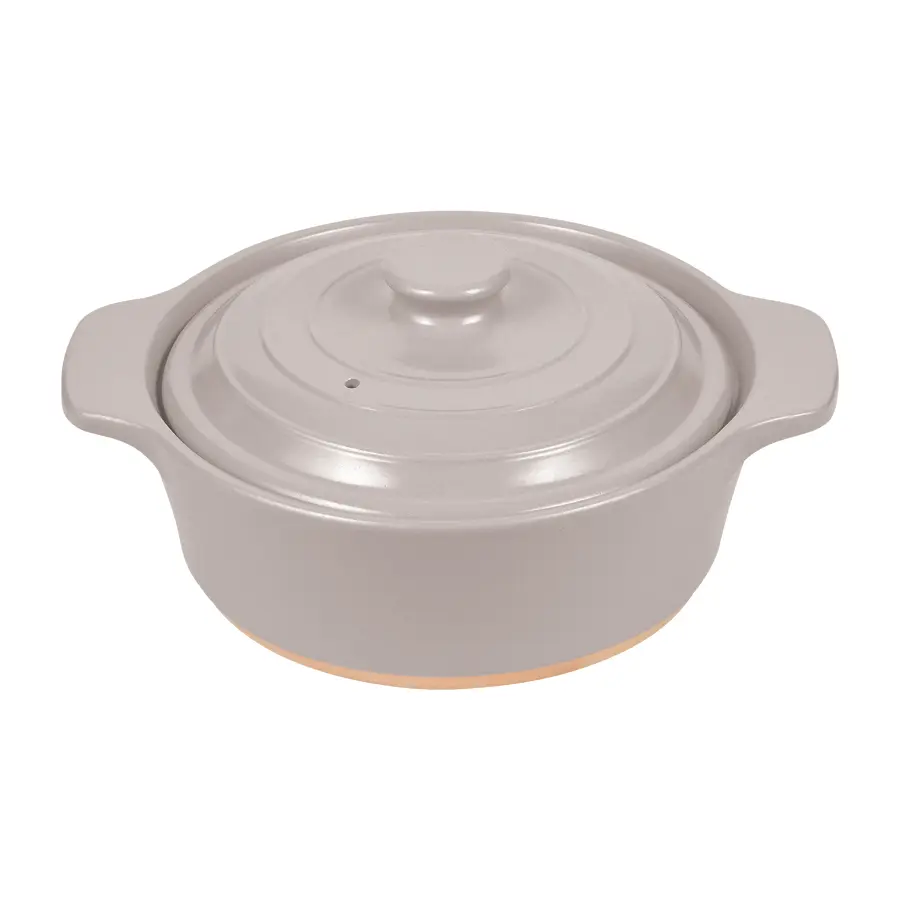Discover Donabe: The Traditional Japanese Pot for Winter Cooking
As winter settles in, it's the perfect time to cozy up with comforting dishes that warm the soul. Enter the donabe, a traditional Japanese pot that has been used for centuries to create delicious, hearty meals. In this blog post, we'll explore the art of donabe cooking, the various types of donabe, and how you can use this versatile pot to bring authentic Japanese flavors to your kitchen this winter.
The History and Significance of Donabe
The donabe, originating from ancient Japan, is steeped in rich history and cultural significance. Its story begins over a thousand years ago when it was first crafted by artisans who understood the unique properties of clay. This traditional cooking vessel has become a symbol of togetherness, often used during family gatherings and seasonal celebrations. The act of cooking and sharing meals from a donabe fosters a sense of community and warmth that is cherished in Japanese culture.
As Japanese cuisine evolved, so did the donabe. It transitioned from a simple cooking tool to a versatile pot that accommodates various cooking styles. While initially utilized for everyday meals, it came to be associated with festive occasions, especially during the winter months. The donabe's unique ability to slow-cook ingredients and meld flavors contributed to its rise in prominence, allowing chefs and home cooks alike to create rich and hearty dishes.
In modern times, the donabe continues to thrive as a beloved culinary tool. Its significance is not limited to its function; it also embodies a connection to nature and the art of traditional craftsmanship. Many families pass down their donabe pots through generations, adding sentimental value to these cooking vessels. This notion of heritage adds to the significance of the donabe, making every meal cooked in it a reminder of the past.
Understanding the Different Types of Donabe
Donabes come in various shapes and sizes, each designed to cater to specific cooking methods and dishes. One of the most popular types is the 'nabe,' which is primarily used for hot pot dishes. This round, deep pot allows for an abundance of ingredients to simmer together, creating a warm, communal dining experience. The nabe's design facilitates even cooking, making it a staple in Japanese homes during the winter months.
Another common type of donabe is the 'kamadosan,' specifically designed for rice dishes. With its thicker walls, the kamadosan retains heat exceptionally well, resulting in perfectly cooked rice every time. Whether it's fluffy white rice or savory mixed rice, this pot ensures that each grain is cooked just right, with a lovely texture that enhances the meal. Many cooks swear by their kamadosan, claiming it produces the best rice they've ever tasted!
Beyond these traditional types, modern adaptations of donabe are emerging, offering innovative features that merge practicality with aesthetics. For instance, spill-resistant donabes and multi-heat source options are now available, designed to cater to those who appreciate both style and functionality in the kitchen. These new designs maintain the quintessential charm of the donabe while incorporating contemporary needs.
Ultimately, the appeal of the donabe lies in its versatility. Regardless of the type you choose, each donabe enhances the flavors of your dishes and elevates your cooking experience. The different variations of donabe empower home cooks to explore the depths of Japanese cuisine, diving into the world of warm stews, flavorful rice, and vibrant hot pots.
Essential Tips for Using Your Donabe
Using your donabe may seem straightforward, but a few essential tips can elevate your cooking experience. First and foremost, it’s crucial to season your donabe before its first use. This involves soaking it in water for a few hours and then heating it gently with some salt and water to prepare the clay. This process not only enhances the clay’s natural properties but also creates a non-stick surface that allows for easier cleanup.
When cooking, it's best to start with medium heat and gradually adjust to low heat as the ingredients begin to cook. This allows for steady heat retention, which is one of the donabe's greatest advantages. Cooking at lower temperatures helps meld the flavors beautifully while allowing the pot to maintain warmth, perfect for leisurely meals that last for hours.
Don’t forget to cover your donabe with its lid while cooking! This is essential in trapping the steam and heat inside, which not only speeds up cooking but also helps to keep the moisture in. This method is particularly useful for stews and hot pots, where you want all those delicious flavors to blend seamlessly.
Lastly, remember to give your donabe some gentle TLC. Avoid shocking the pot with drastic temperature changes, such as rinsing a hot donabe in cold water. This can lead to cracks and damage, ultimately shortening its lifespan. Instead, let your donabe cool down naturally before cleaning it with warm water and a soft sponge to keep it in excellent condition.
Cooking with Donabe: Recipes for Winter Warmth
When it comes to donabe cooking, the possibilities are endless! One of the most beloved recipes is Sukiyaki, a delightful dish that combines tender sliced beef, fresh vegetables, and a sweet soy sauce broth. Simply layer your ingredients in the donabe, pour the broth over, and let it simmer until everything is cooked to perfection. Each bite brims with flavor, making it an ideal centerpiece for your winter gatherings.
For a vegetarian twist, consider making a Yasai Nabe, a colorful vegetable hot pot. Fill your donabe with an assortment of seasonal vegetables, such as mushrooms, tofu, and leafy greens, topped off with a savory miso or broth. This dish not only provides warmth but is also a healthful way to enjoy the bounty of winter produce. The donabe's ability to retain heat allows the flavors to meld beautifully, creating an incredibly satisfying meal.
Another winter favorite is Chanko Nabe, a hearty stew traditionally enjoyed by sumo wrestlers. Load your donabe with protein-rich ingredients such as chicken, fish, and a variety of vegetables. This satisfying dish not only fuels you up but also warms you from the inside out. As the ingredients simmer together, the resulting broth is rich and flavorful, perfect for serving over rice or as a comforting soup.
Whether you're hosting a dinner party or enjoying a quiet night at home, cooking with a donabe is an experience that brings joy and warmth. The act of gathering around this traditional pot, sharing stories and laughter, is an essential part of the donabe cooking experience. No matter the recipe, the donabe transforms each meal into a moment to cherish.
Caring for Your Donabe: Maintenance and Longevity
To ensure your donabe stays in great condition for years to come, proper care and maintenance are essential. After each use, allow the pot to cool naturally at room temperature. Quick temperature changes can cause stress on the clay, leading to cracks or breakage. Once it’s cool, gently clean your donabe with warm water and a non-abrasive sponge or brush to preserve its surface.
Additionally, avoid using your donabe in the oven or placing it on direct flames unless specified by the manufacturer. Most donabes are designed for stovetop cooking, and exposure to other heat sources could compromise the pot's integrity. Always check the guidelines that come with your specific donabe for any special instructions.
When storing your donabe, ensure it is completely dry. Leaving moisture inside can lead to mold or unpleasant odors. A great practice is to place a cloth or paper towel inside the pot to absorb any residual moisture. This proactive step will help maintain the quality of your donabe and ensure it’s ready for your next cooking adventure.
Lastly, if you notice any stains or residue that doesn’t come off with normal cleaning, try soaking the pot in a mixture of water and baking soda. This gentle cleaning method can restore your donabe’s appearance without damaging the precious clay. With these simple care techniques, your donabe will not only last but will also continue to impart wonderful flavors to your winter cooking.
Introducing Pearl Life’s Donabe Collection
Pearl Life offers a range of high-quality donabes designed to enhance your winter cooking experience. Here are three standout options:
Spill-Resistant Donabe
This donabe is designed to be lighter than traditional pots, making it easier to handle and wash. Its special shape minimizes the risk of boil-overs, making it a great option for beginners and experienced cooks alike.
Stylish, Multi-Heat Source Donabe
Versatile and stylish, this donabe works perfectly on both gas stoves and induction cooktops. Its sleek design adds a modern touch to your kitchen while still providing the traditional donabe cooking experience.
Dual-Style Donabe
This donabe features a design that complements both Japanese and Western dishes, making it an ideal choice for all kinds of meals. Made from high-quality ceramic, it has excellent heat retention, keeping your dishes warm for longer and enhancing the overall flavor.
Embrace the Warmth of Donabe Cooking
By embracing the donabe in your winter cooking, you're not just enhancing your meals—you're also celebrating a rich culinary tradition that has stood the test of time. Whether you're preparing a warming nabe dish or simmering a flavorful stew, the donabe offers endless possibilities for mouthwatering creations. So gather your ingredients, invite some friends over, and let the donabe bring warmth and joy to your winter gatherings.




